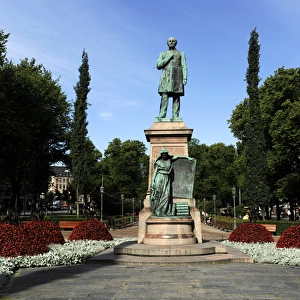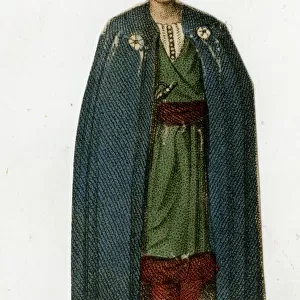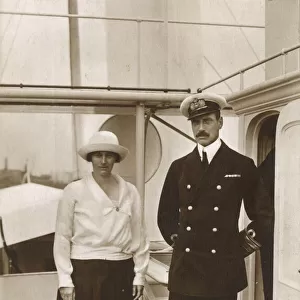Home > Asia > Georgia > Related Images
Prince of Imereti, Georgia, with musket and scimitar
![]()

Wall Art and Photo Gifts from Mary Evans Picture Library
Prince of Imereti, Georgia, with musket and scimitar
Prince of Imereti, Georgia, with musket and scimitar.. Handcolored woodcut from Auguste Wahlens Manners, Customs and Costumes of all the People of the World, Brussels, 1845
Mary Evans Picture Library makes available wonderful images created for people to enjoy over the centuries
Media ID 14220488
© Florilegius / Mary Evans
19thcentury Augustewahlen Boots Francois Frogging Georgia Mannersandcostumesofthepeopleoftheworld Musket Nicolasloumyer Pantaloons Scimitar Tunic Woodcut Imereti
EDITORS COMMENTS
This striking handcolored woodcut print depicts the Prince of Imereti, a historic region in western Georgia, from the early 19th century. The Prince is shown wearing traditional Georgian attire, including a helmet adorned with intricate metalwork, a tunic with frogging, pantaloons, and high boots. He holds a musket in one hand and a scimitar in the other, symbolizing his military prowess and authority. The Prince's helmet, known as a "chokha," is a distinctive feature of Georgian royal and noble headgear. The helmet's design varies from region to region, but it typically includes a high, conical crown, a visor, and a neck guard. The chokha was not only a symbol of rank and status but also provided protection in battle. The Prince's tunic is decorated with intricate gold and silver embroidery, known as "jean," which was a highly valued craft in Georgia. The frogging on the tunic, consisting of rows of decorative buttons and loops, was a common feature of Georgian clothing. The pantaloons, which are baggy trousers that extend to the ankles, were also a traditional element of Georgian fashion. The Prince's musket and scimitar are symbols of his military power and readiness for battle. Muskets were the primary firearms used in the Caucasus region during the 18th and 19th centuries, while scimitars were the preferred sword of the Caucasian peoples. This print is from Auguste Wahlen's "Manners, Customs and Costumes of all the People of the World," published in Brussels in 1845. The work was produced by the renowned French artist Jean-Francois Nicolas Loumyer and his team, who traveled extensively to document the traditional costumes and customs of various peoples around the world. This print offers a fascinating glimpse into the fashion, history, and culture of the Prince of Imereti and the Georgian people during the 19th century.
MADE IN THE USA
Safe Shipping with 30 Day Money Back Guarantee
FREE PERSONALISATION*
We are proud to offer a range of customisation features including Personalised Captions, Color Filters and Picture Zoom Tools
SECURE PAYMENTS
We happily accept a wide range of payment options so you can pay for the things you need in the way that is most convenient for you
* Options may vary by product and licensing agreement. Zoomed Pictures can be adjusted in the Cart.













